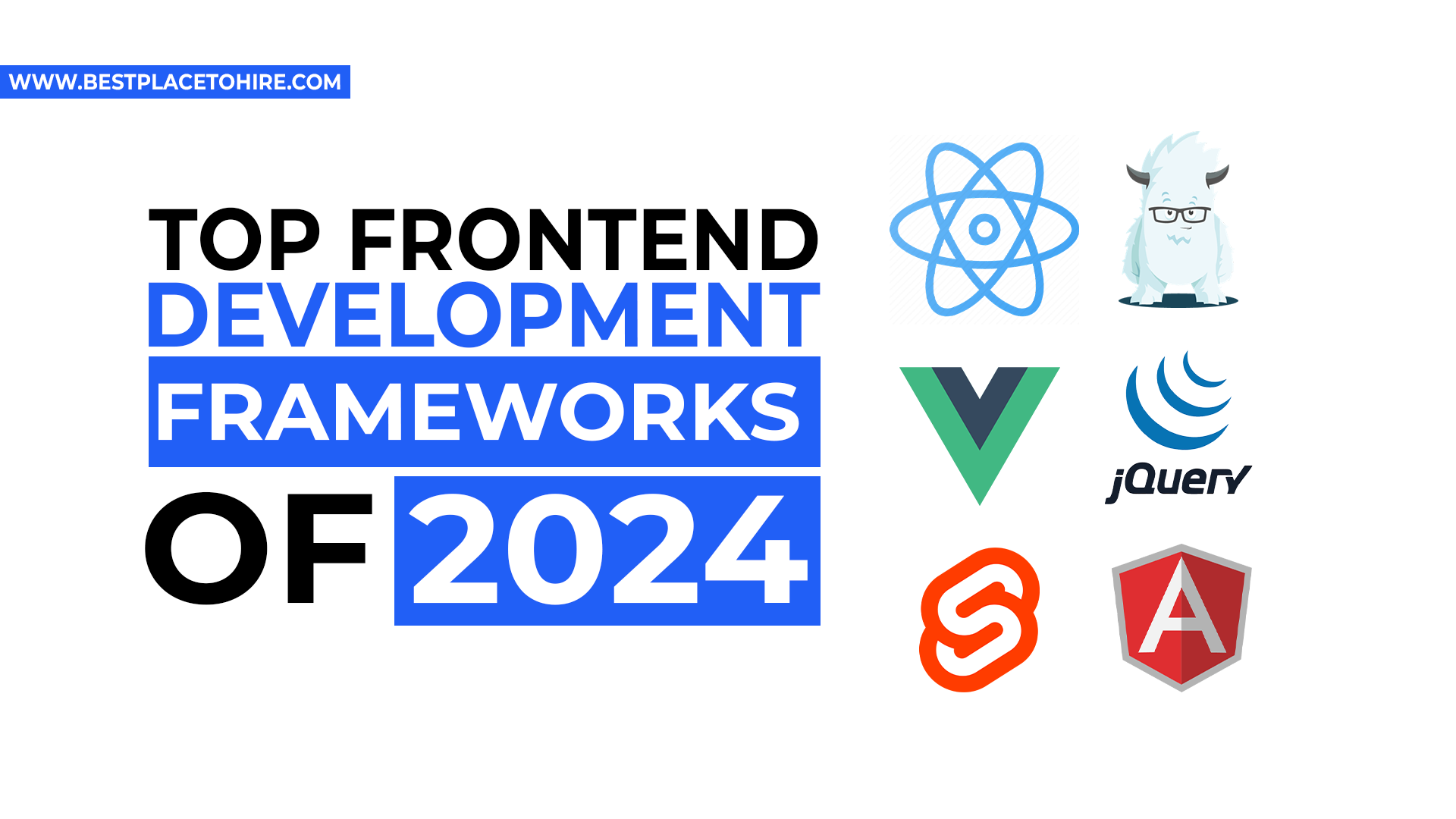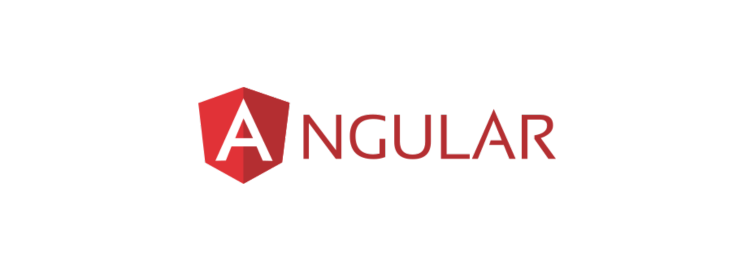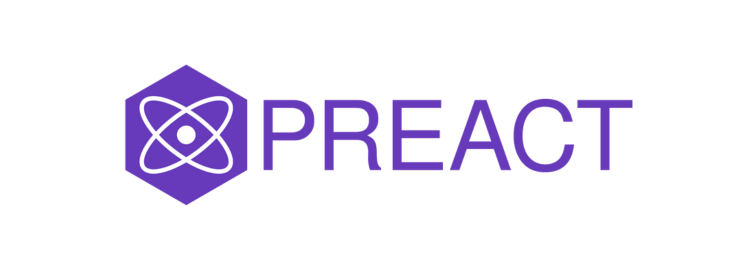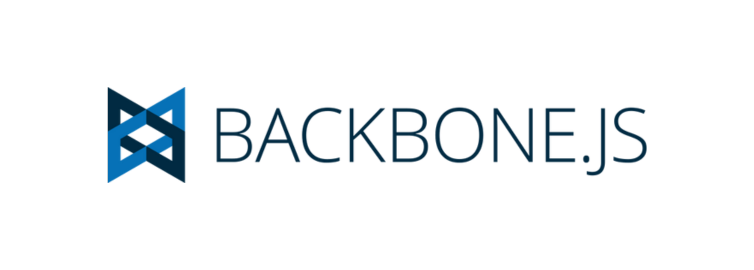
Top Frontend Development Frameworks 2024


Frontend development frameworks have become indispensable for crafting web applications in today’s tech landscape. They offer developers a suite of pre-configured reusable ui components, extensive libraries, and handy tools, facilitating the creation of interactive and responsive user interfaces with ease. Leveraging these frontend frameworks not only enhances your application’s performance but also streamlines the development workflow, saving valuable time.
In this comprehensive guide, we’ll explore the most popular frontend frameworks to look out for in 2024, delving into their functionalities, advantages, potential use cases, strengths, and weaknesses, as well as the renowned companies that have adopted them.
We’ll draw comparisons based on various criteria including performance, user-friendliness, community backing, and overall popularity. By the end of this article, you’ll be well-equipped with the knowledge to choose the right frontend framework for your specific project in 2024.
What are Frontend Development Frameworks?
In the realm of web development, frontend development stands pivotal, focusing on crafting the visual and interactive segments of a website or a web application.
This process transforms the interactive user interfaces into a vivid, engaging space, offering a seamless interaction using a diverse toolkit comprising programming languages, frameworks, and tools.
Frontend developers play a crucial role in this, striving to create an intuitive, user-centric experience. They proficiently employ web languages like HTML, CSS, and JavaScript, specializing in the intricate art of UI (User Interface) and UX (User Experience) design for websites and building web applications.
The advantages of frontend web development are numerous:
Attracting and Retaining Users: By developing an attractive and compelling user interfaces, it captures and holds the attention of visitors, providing a smooth navigation experience.
Enhancing Performance: Optimizing page load speeds and minimizing server requests enhances user experience and could potentially boost your SEO rankings.
Responsive Design: Ensuring compatibility across a wide array of devices, from desktops and laptops to tablets and smartphones, is vital as mobile internet usage continues to surge.
Interactive Elements: Integrating dynamic content such as animations, sliders, forms, and more enriches the user experience and adds value to your website or application.
Frontend developers work in tandem with backend developers, ensuring a harmonious integration between the frontend and backend systems, ultimately aiming to provide a flawless user experience for visitors.
When it comes to popular javascript frameworks, think of them as your toolkit for simplifying the process of building and maintaining large-scale projects. They offer a structured foundation, complete with reusable javascript code modules, ready-to-use solutions for common programming challenges, and guidelines for constructing your application’s architecture. This not only accelerates the development process but also ensures consistency and reliability across your project.
Frontend frameworks, specifically, encompass a variety of tools including utility programs, javascript code libraries, scripting languages, and more, facilitating a smoother development and deployment process for substantial software products.
With these popular javascript frameworks, developers gain a valuable head start, enabling them to focus on adding other features and functionalities tailored to their specific project requirements.
By utilizing these most popular javascript frameworks and tools, frontend developers are able to create interactive, responsive, and user-friendly web applications and websites, setting the stage for a successful and engaging online presence as we head into 2024.
Recommended Frontend Web Development Frameworks for 2024
In the swiftly evolving tech landscape of 2024, selecting a frontend framework that aligns with user demands and technological advancements becomes imperative. Here’s a comprehensive checklist of what your frontend framework must bring to the table:
Scalability: Look for a framework capable of managing both sprawling, intricate applications and simpler, more compact projects.
Performance: Speed is of the essence. A snappy, responsive user experience is a must.
Accessibility: Ensure your framework is inclusive, catering to users with disabilities and providing universal access.
Security: Opt for a framework with robust built-in features to safeguard your application from potential threats and vulnerabilities.
Mobile-First Design: Given the prevalence of mobile device usage for internet access, a mobile-friendly framework is non-negotiable.
Impeccable UI and UX: Sales hinge on delivering a seamless digital experience that flawlessly addresses user needs. This demands a top-tier user interfaces and experience.
Efficient Code Management: The ability to reuse code and web elements across diverse projects streamlines development, conserving both time and resources.
Optimized Navigation: Facilitate a user-friendly journey across your website, subtly guiding visitors to their destination, often without their conscious realization.
Boosted User Engagement: A smart, user-intuitive website not only simplifies the conversion process but also fosters brand trust and loyalty.
Choosing the right frontend framework is a critical decision that impacts not just the development process but also the end-user experience, shaping the way users interact with and perceive your brand. Ensure your selection is future-ready, aligning with both current trends and emerging innovations, to set the stage for success in 2024 and beyond.
Leading Front end Frameworks for Development Process in 2024
React: A Robust Solution by Facebook

React stands out in the front end development landscape, revered for its declarative, efficient, and flexible nature. React’s component based architecture makes it unique. Originating from the tech giants at Facebook, React is not just a framework; it’s a comprehensive JavaScript library dedicated to building user interfaces.
Its signature features include JSX, a unique declarative syntax extension permitting HTML-like code within JavaScript, and the virtual DOM, an in-memory version of the real DOM that enhances performance by minimizing updates and streamlining the server side rendering process.
Ideal for crafting extensive and intricate applications, React shows its prowess in single-page web applications (SPAs), e-commerce sites, social media platforms, automatic code splitting, static site generation and web development, making it a top choice for react developers aiming for scalability and efficiency in 2024.
Pros:
Strong Community Support: React boasts a vast, active, and supportive community. Developers can access a wealth of resources, including extensive documentation, tutorials, forums, and Q&A platforms.
Extensive Ecosystem: React’s ecosystem is teeming with a plethora of third-party libraries, tools, and extensions.
Stellar Performance: React shines when it comes to performance, thanks to its virtual DOM implementation and efficient update and rendering system.
Cons:
Boilerplate Code: React’s development environment tends to require a substantial amount of boilerplate code.
Frequent Updates: React is continuously evolving, with frequent updates and releases that introduce new features, optimizations, and changes.
Angular: Google’s Powerhouse

Angular, developed by Google, emerges as a formidable front end javascript framework, boasting a TypeScript-based open-source nature tailored for crafting cutting-edge dynamic web applications.
With standout features such as two-way data binding, dependency injection, and a modular architecture promoting reusable components, Angular facilitates a seamless front end development experience and server side rendering.
Its architectural prowess positions it as a go-to minimalistic javascript framework designed for complex, enterprise-level complex applications, showcasing its capabilities in large-scale e-commerce platforms, as well as in the financial and healthcare sectors.
Pros:
Excellent Performance: Angular’s efficient change detection, ahead-of-time (AOT) compilation, and rendering optimization ensure that applications built with it deliver outstanding performance.
High Scalability: Angular is designed to handle the demands of large-scale applications. Its modular structure allows for the easy organization of code, making it an excellent choice for enterprise-level projects.
Robust Security Features: Angular takes security seriously and provides built-in protections against common web-application vulnerabilities such as cross-site scripting (XSS) and cross-site request forgery (CSRF).
Cons:
Steep Learning Curve: Angular’s extensive set of features and functionalities, combined with its use of TypeScript, can be overwhelming for new developers or those coming from different frameworks.
Heavyweight Codebase: The framework itself is quite large, and this can lead to longer load times for applications, especially if they are not properly optimized.
Lack of Flexibility: Angular’s opinionated nature means it provides a prescribed way of doing things.
Vue.js: A Progressive and Lightweight Framework

Crafted by Evan You, Vue.js has gained momentum as a progressive front end javascript framework, celebrated for its lightweight build and ease of adoption. Vue.js, while being a comprehensive JavaScript library, offers developers a component-based architecture, server side rendering, reactive and composable data binding, and a virtual DOM, all contributing to a smooth and efficient front end development process.
Vue.js shines when applied to smaller and medium-sized projects, proving its worth in developing blogs, forums, static site generation, progressive web apps and personal websites, and establishing itself as a user-friendly option for front end development in 2024.
Pros:
Effortless Integration with Existing Projects: Vue.js is well-known for its ability to be incrementally adoptable.
Uncomplicated Syntax: The framework offers a straightforward syntax that eases the learning curve for new developers and accelerates the development process.
Robust Ecosystem: Vue.js boasts a burgeoning ecosystem that includes a plethora of third-party libraries and tools.
Cons:
Limited Scalability: While Vue.js is suitable for a variety of application sizes, it can face challenges when scaling to extremely large and complex applications.
Inadequate Official Documentation for Advanced Use Cases: While Vue.js does provide comprehensive documentation for standard use cases, it may fall short when it comes to more advanced or specific scenarios.
Smaller Community Compared to Competitors: Although the Vue.js community is growing rapidly, it is still smaller than the communities surrounding other major frameworks like React and Angular.
jQuery: Simplifying Interactivity

Developed by John Resig, jQuery has long held its ground as a front-runner in the front end library domain. It is celebrated for its lightweight nature and rapid execution, simplifying HTML document manipulation, event handling, and animation. It excels in enhancing existing websites with interactive elements and animations, proving itself as an invaluable tool for smaller scale complex applications.
In 2024, jQuery continues to be relevant for quick and effective implementations, especially in scenarios where simplicity and speed are paramount.
Pros:
Ease of Use: jQuery is renowned for its straightforward syntax and user-friendly interface.
Broad Browser Support: One of jQuery’s hallmark strengths lies in its cross-browser compatibility.
Vast Ecosystem of Plugins and Extensions: jQuery boasts a rich ecosystem, teeming with an extensive array of plugins and extensions.
Cons:
Limited Functionality for Complex Applications: As the web has evolved, so have the demands placed on frontend frameworks.
Performance Issues for Large-Scale Applications: For sizable, data-intensive applications, jQuery can exhibit performance bottlenecks.
Lack of More Modern Features Compared to Newer Frontend Frameworks: As the landscape of web development has progressed, newer frontend frameworks have emerged, bringing with them more sophisticated features and capabilities.
Preact: A Lightweight React Alternative

Crafted by Jason Miller, Preact emerges as a nimble and efficient frontend library. It positions itself as a compact yet powerful alternative to React, delivering a similar API and feature set but in a more condensed form. Among its highlight key features are a virtual DOM, component-based architecture, and support for server side rendering.
Preact is particularly apt for small to medium-sized complex applications where performance is key, making it a prime choice for mobile applications and e-commerce platforms aiming for agility and speed.
Pros:
High Performance: Preact is renowned for its exceptional performance, especially in scenarios that demand quick rendering and fast updates.
Small Codebase: One of Preact’s most celebrated features is its incredibly small footprint. With a codebase that is significantly smaller than that of React, it’s an ideal choice for projects where minimizing bundle size is a priority.
Simple API: Preact offers a straightforward and easy-to-grasp API, making the learning curve less steep for new developers or those transitioning from React.
Cons:
Limited Functionality Compared to React: While Preact aims to offer a similar API to React, there are certain features and functionalities available in React that are not present in Preact, or are available through additional libraries.
Lack of Official Documentation: Compared to React, Preact’s official documentation might seem less extensive.
Ember: Building Web Applications

Yehuda Katz brings us Ember, a frontend framework known for its robustness and strong opinions on how web applications should be structured. Ember is engineered for building ambitious and sizable web applications, offering key features like two-way data binding, a component-based architecture, and a powerful command-line interface for streamlined code generation and dependency injection management.
Ideal for enterprise-level systems and comprehensive business applications, Ember stands out when scalability, data binding and structure are top priorities.
Pros:
Excellent Performance: Ember is designed for speed and efficiency, ensuring your applications run smoothly and respond quickly to user interactions.
Robust Tooling: With a comprehensive set of tools and features, Ember provides everything developers need for application development, from development to deployment.
Strong Community: Boasting a vibrant and active community, Ember ensures developers have access to a wealth of resources, support, and plugins, fostering a collaborative environment.
Cons:
Steep Learning Curve: Ember’s comprehensive nature comes with a complexity that may pose challenges for beginners, requiring a significant investment in learning to master.
Heavyweight Codebase: The framework’s extensive feature set results in a more substantial codebase, which can be overwhelming and may contribute to slower initial load times.
Rigid Conventions: Ember’s opinionated approach enforces certain conventions and practices, which, while promoting consistency, can limit flexibility and adaptability in development.
Backbone: Minimalism and Flexibility

Created by Jeremy Ashkenas, the mind behind CoffeeScript and Underscore.js, Backbone is a lightweight and flexible frontend library. It is tailored for developing single page applications (SPAs) and providing a structured foundation to web applications.
Its straightforward API, event-driven architecture, and compatibility with various third party libraries and best javascript frameworks make it a versatile choice.
Backbone shines when applied to small to medium-sized projects, showcasing its ability to bring flexibility and simplicity to simple e-commerce sites and social media platforms.
Pros:
Lightweight Codebase: Backbone provides a minimalistic structure, making it fast and efficient for smaller applications.
Simple API: Its API is straightforward, ensuring a smooth learning curve and ease of use for developers.
Vast Ecosystem: Backbone boasts a rich ecosystem of plugins and extensions, allowing developers to enhance functionality as needed.
Cons:
Limited Functionality for Complex Applications: Its lightweight nature may fall short when it comes to handling the demands of more complex, feature-rich applications.
Lack of Two-Way Data Binding: Unlike some of its contemporaries, Backbone does not offer two-way data binding out of the box, which could lead to more boilerplate code and manual data handling.
Svelte: A Paradigm Shift in Development

Svelte, meticulously crafted by Rich Harris of The New York Times, stands out as a groundbreaking frontend framework in the tech world of 2024. Distinguished by its innovative approach, Svelte takes the lead by compiling existing code directly into highly-optimized JavaScript, bypassing the traditional runtime framework layer and offering unparalleled performance.
Its notable key features include a seamless reactive data binding system, a virtual DOM, low learning curve and an easy-to-grasp simple syntax, facilitating a smooth integrated development environment process.
With these characteristics, Svelte is exceptionally well-suited for small to medium-sized or single page applications, including mobile platforms and streamlined e-commerce websites, where performance is of the essence.
Pros:
High Performance: Svelte stands out with its exceptional runtime efficiency, ensuring that applications run smoothly and respond quickly to user interactions.
Small Codebase: With Svelte, developers can achieve more with less code, leading to cleaner, more maintainable projects.
Simple Syntax: The framework’s straightforward syntax makes it accessible, allowing developers to pick up and start creating with minimal learning curve.
Cons:
Limited Functionality: Compared to other more established frontend frameworks, Svelte offers fewer built-in features, which could necessitate additional coding or reliance on external libraries for complex tasks.
Smaller Community: While growing, Svelte’s community is currently smaller than those of other popular frameworks, which might result in fewer resources and learning materials available to developers.
Semantic-UI: Intuitive and User-Friendly Interfaces

Semantic-UI, a frontend framework deeply rooted in a semantic naming convention, offers developers a comprehensive set of pre-built UI components and styles. Its modern and user-centric approach ensures the creation of responsive and accessible complex user interfaces.
Among its strengths are a straightforward simple syntax, responsive design capabilities, and cross-browser compatibility, making Semantic-UI a reliable choice for developers aiming to build small to medium-sized applications. Its capabilities shine brightest in scenarios requiring an intuitive and streamlined complex user interface, such as blogs and personal websites.
Pros:
Ease of Integration: Semantic-UI offers seamless integration capabilities, allowing developers to effortlessly incorporate its features into existing applications without major overhauls.
Rich Component Library: Boasting a comprehensive library of pre-built components, Semantic-UI provides a robust set of tools that can significantly expedite the development process.
User-Friendly Syntax: With its straightforward and intuitive syntax, developers can quickly grasp and implement Semantic-UI’s features, ensuring a smoother development journey.
Cons:
Limited Customization: While it offers ease of use, Semantic-UI can be restrictive in terms of customization options, potentially limiting creative freedom for unique design implementations.
Challenges with Complex Applications: For developers working on more intricate and complex applications, Semantic-UI’s simplicity could translate to a lack of required flexibility, posing potential roadblocks in development.
Foundation: Building with Flexibility and Use of Javascript code

Developed by the team at ZURB, Foundation stands tall as a frontend frameworks renowned for its flexibility and responsiveness. Offering an extensive set of pre-built UI components and styles, Foundation equips developers with all the necessary tools to build ambitious web applications.
Key features that set Foundation apart include its versatile grid system, a component-based architectural approach, and steadfast cross-browser compatibility. These key features culminate in making Foundation a best frontend framework for small to medium-sized applications where a responsive and adaptable building user interfaces is paramount, such as in e-commerce platforms and mobile applications.
Pros:
Flexibility: Foundation stands out with its flexibility, providing developers the freedom to tailor the framework according to their specific project needs.
Vast Library of Pre-built Components: The framework boasts a comprehensive library of pre-built components, streamlining the development process and saving valuable time.
Excellent Documentation: Foundation provides extensive and well-structured documentation, ensuring developers have a reliable reference point to optimize their use of the framework.
Cons:
Heavyweight Codebase: Despite its numerous features, Foundation’s codebase can be quite hefty, potentially leading to longer load times and performance challenges.
Steep Learning Curve: New users might find Foundation’s vast array of features and settings overwhelming, requiring a significant investment of time and effort to master.
Analyzing the Frontend JS Frameworks for Interactive user interfaces
Performance:
In 2024, the landscape of best javascript frameworks is brimming with highly optimized choices, each tailored for specific application needs. React, Preact, and Svelte lead the pack in performance, boasting smaller codebases, rapid server side rendering, and swift responsiveness, ideal for applications where speed is paramount. On the other end, Angular, Ember, Vue, and Backbone present more substantial codebases, packed with advanced functionalities and robust tooling necessary for intricate application development. Meanwhile, Semantic-UI and Foundation stand out for their responsiveness and extensive js libraries of reusable components, aiding developers in swiftly crafting user-centric interfaces.
Ease of Use:
Ease of use varies across these javascript frameworks. React, Preact, jQuery, and Vue are celebrated for their straightforward APIs, welcoming immediate application. Angular, Ember, and Backbone, though, impose more rigid conventions and demand a steep learning curve. Svelte, Semantic-UI, and Foundation counterbalance this with their simplistic syntax and user-friendly design capabilities, ensuring swift development of responsive, engaging designs.
Learning Curve:
The learning curve fluctuates, contingent on the complexity of the application and the developer’s expertise. React, Preact, Vue, and Svelte are accessible, welcoming developers with minimal experience. Angular, Ember, jQuery, and Backbone, conversely, require a more profound commitment to mastery. Semantic-UI and Foundation, while generally straightforward, present more intricate customization challenges.
Community Support:
Community strength is a hallmark of these top frontend js frameworks. React, Angular, Vue, jQuery, and Ember boast expansive communities, teeming with resources ranging from comprehensive documentation and tutorials to a plethora of plugins. Backbone, Preact, Svelte, Semantic-UI, and Foundation, while smaller in community size, still uphold exceptional support and resource availability.
Popularity and Adoption:
When it comes to widespread use, React, Angular, Vue, and jQuery are the frontrunners, dominating the frontend framework scene. Svelte and Preact follow closely, carving out substantial niches for themselves. Ember, Backbone, Semantic-UI, and Foundation, while perhaps more niche, maintain significant user bases, each holding their own in the competitive landscape of frontend development.
In essence, the choice of a frontend framework in 2024 hinges on a careful consideration of performance needs, ease of use, large and active community support, and current trends in popularity and adoption. This guide aims to provide a holistic overview to aid in making an informed decision tailored to your specific efficient development requirements.
Conclusion
Frontend js frameworks stand as indispensable pillars in the realm of web development, pivotal for crafting modern, responsive, and interactive web applications. They usher in a standardized approach to frontend development, enhancing javascript code efficiency, consistency, and the ease of maintenance.
In this comprehensive exploration, we’ve navigated through the top frontend js frameworks of 2024, delving into the intricacies of React, Angular, Vue, jQuery, Preact, Ember, Backbone, Svelte, Semantic-UI, and Foundation.
Selecting the ideal frontend js framework for your project is a nuanced decision, influenced by a myriad of factors including specific project requirements, developer proficiency, prospects of future scalability, and the availability of community support.
In summary, the frontend js framework you settle on will profoundly influence both the journey of development and the final code quality of your web application. Armed with the knowledge from this article, you are now poised to make a judicious choice, selecting a frontend js framework that aligns impeccably with your project’s demands and limitations.
Utilizing the right frontend js framework empowers you to enhance productivity, cultivate a more efficient and maintainable codebase, and ultimately deliver an unparalleled user experience to your audience.